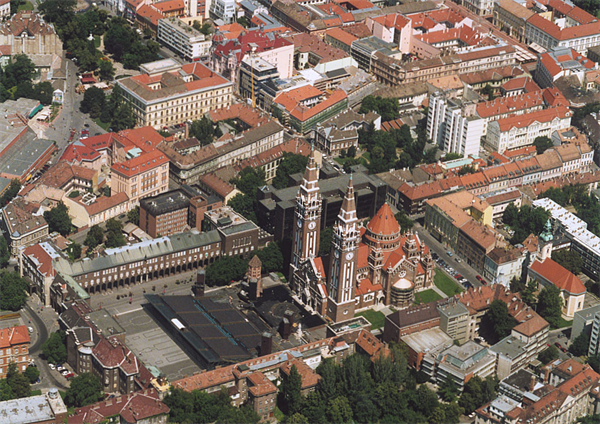- CURRENT LOCATION: HOME
- >> About Shaanxi
- >> Global Associations
- >> Sister Cities
- >>
- Weinan
Szeged City (Hungary)
2017-04-27 09:29:08 , Source : The Government Website of Shaanxi Province
Szeged is the third largest city of Hungary, the largest city and regional centre of the Southern Great Plain and the county seat of Csongrád County. The University of Szeged is one of the most distinguished universities in Hungary.
The famous Szeged Open Air (Theatre) Festival (first held in 1931) is one of the main attractions, held every summer and celebrated as the Day of the City on May 21.
Geography
Szeged is situated near the southern border of Hungary, just to the south of the mouth of the Maros River, on both banks of the Tisza River, nearly in the centre of the Carpathian Basin. Due to the high hours of sunlight reported annually, Szeged is often called 'the city of sunshine'.
Education
The city of Szeged has 62 kindergartens, 32 elementary schools, 18 high schools and a university, which were established by the unification of the past existing higher education centres. The two most prominent high schools (Ságvári Endre Gyakorló Gimnázium and Radnóti Miklós Kísérleti Gimnázium) are in the top fifteen in the country.
Szeged is the higher education centre of southern Hungary and has built quite a reputation for itself. Thousands of students study here, many of whom are foreign students from all around the world. The Biological Research Centre of the Hungarian Academy of Sciences, which was built with the help of UNESCO funds, has also been a considerable source of advanced research. Scientists at this laboratory were first in the world to produce artificial heredity material in the year 2000. The building has served as a home to many well known conferences and continues to make contributions to the world of science. The University of Szeged was ranked as the top university of the country on Academic Ranking of World Universities - 2005, and in the top 100 in Europe.
Architectural Heritage
New Synagogue
“Love your neighbour as yourself.” The biblical commandment can be read in Hebrew and Hungarian on the triumphal arch of the New Synagogue built in 1903. The use of the Hungarian language may be attributed to the influence of Chief Rabbi Immánuel Lőw, a scholar, who took an active part in designing the building, supporting the work of the architect Lipót Baumhorn with his guidance. The painted glass windows made in the workshop of Miksa Róth and the symbolic glass dome of exceptional beauty are unique ornaments of the eclectic synagogure. The interior is dominated by the entrancing harmony of the ornaments in ivory, golden and blue. The Jerusalem marble closing stone oft hte altar, the door of the Ark of Conveant made of acacia from the Nile region, the menorahs decorated with precious stones, as well as the wall paintings depicting the plants of the Bible all deserve attention. The synagogue with its excellent acoustics is a special venure for high standar organ and light musical concerts.
Musical clock
The tunes of this unique piece of art by watchmaker Ferenc Csúri could be first heard at the Open Air Festival in 1936. The music clock on the upper level of the building, opposite the main entrance of the Votive Church is a symbol of medieval universities. Twice a day, at 12:15 and 17:45 it shows the walk of the graduating students at the end of the academic year. Then the eminences of the university council and the graduating students walk around in front of the clock. The basswood figures were carved by József Kulai, whose models were famous Hungarian people, such as Kúnó Klébersberg, András Dugonics, Kelemen Mikes, Sándor Petőfi or István Vedres. The scene is accompanied by the melody of the well-known Hungarian student song ‘Ballag már a vén diák…'(The old student is saying farewell…). Besides, at every hour the clock plays the song ‘Szeged hírös város’ (Szeged is a famous city) as a signal.

Government Organizations



Other Links

Copyright@www.shaanxi.gov.cn All Rights Reserved
Registration Number:陕ICP备10004160号
